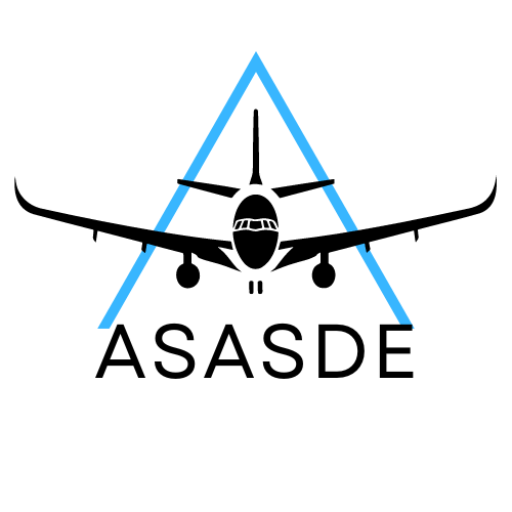Introduction
The development and integration of uncrewed aircraft, commonly known as drones, have revolutionized various sectors, from military operations to commercial applications. As these technologies become more prevalent, the need for an advanced traffic control system specifically designed for uncrewed aircraft has become critical. The Air Force has stepped forward to address this need by testing a new Uncrewed Aircraft Traffic Control System, aiming to enhance safety, coordination, and efficiency in the airspace.
This article explores the key aspects of the Uncrewed Aircraft Traffic Control System, its testing process, potential benefits, and the role of platforms like Asasde in providing comprehensive information on this emerging technology.
The Necessity of Uncrewed Aircraft Traffic Control
The rapid proliferation of uncrewed aircraft systems (UAS) presents unique challenges to traditional air traffic management systems. Unlike manned aircraft, UAS can vary widely in size, capability, and mission, ranging from small drones used for aerial photography to large, sophisticated military platforms. This diversity necessitates a specialized traffic control system that can accommodate the unique characteristics and operational requirements of UAS.

A well-designed Uncrewed Aircraft Traffic Control System is crucial for several reasons:
Safety: Ensuring the safe integration of UAS into the airspace alongside manned aircraft.
Efficiency: Optimizing air traffic flow to prevent congestion and reduce delays.
Coordination: Facilitating communication between different UAS operators and air traffic control authorities.
The Air Force’s testing of this system represents a significant step towards a future where uncrewed and manned aircraft can coexist safely and efficiently in the skies.
How the Air Force Is Testing the System
The Air Force’s testing of the Uncrewed Aircraft Traffic Control System involves a series of rigorous evaluations designed to assess the system’s capabilities and performance. This testing process includes:
Simulation Testing: Utilizing advanced simulation technologies to model various air traffic scenarios and evaluate the system’s response.
Live Flight Testing: Conducting live flight tests with various types of UAS to observe the system’s real-world performance.
Interoperability Testing: Ensuring that the system can effectively communicate and coordinate with existing air traffic control systems and UAS platforms.
These tests are critical for identifying potential issues and refining the system to meet the stringent safety and operational standards required for full deployment.
Potential Benefits of the Uncrewed Aircraft Traffic Control System
The successful implementation of an Uncrewed Aircraft Traffic Control System could offer numerous benefits, including:
Enhanced Safety: By providing real-time traffic data and automated conflict resolution, the system can significantly reduce the risk of collisions and other safety incidents.
Increased Airspace Capacity: The system can optimize the use of airspace, allowing for a higher density of both manned and unmanned aircraft operations.
Improved Efficiency: Automated traffic management can streamline flight operations, reduce delays, and improve overall efficiency.
Support for Advanced UAS Applications: The system can support the integration of more complex UAS applications, such as autonomous cargo delivery and urban air mobility.
The Role of Asasde in Uncrewed Aircraft Technology
Asasde is a leading platform that provides comprehensive information on advanced air mobility and uncrewed aircraft technologies. From detailed articles to expert analyses, Asasde offers valuable insights into the latest developments in the field, including the ongoing testing of the Uncrewed Aircraft Traffic Control System by the Air Force.
Asasde covers a wide range of topics related to uncrewed aircraft, including:
Technological Innovations: Updates on the latest advancements in UAS technology.
Regulatory Developments: Information on new regulations and policies affecting UAS operations.
Industry Trends: Insights into emerging trends and market dynamics in the uncrewed aircraft sector.
By providing accurate and up-to-date information, Asasde helps stakeholders stay informed about the latest developments and opportunities in the rapidly evolving world of uncrewed aircraft.
Challenges and Considerations
Despite the potential benefits, the development and implementation of an Uncrewed Aircraft Traffic Control System also present several challenges. These include:
Technical Complexity: Designing a system that can handle the diverse range of UAS and their varying operational requirements is a complex task.
Regulatory Hurdles: Navigating the regulatory landscape and ensuring compliance with national and international aviation standards.
Cybersecurity Risks: Ensuring the system is secure against cyber threats and unauthorized access.
Public Acceptance: Addressing concerns about privacy and safety related to the widespread use of UAS.
Addressing these challenges will be crucial for the successful deployment of the Uncrewed Aircraft Traffic Control System and the broader integration of UAS into the national airspace.
Future Prospects and Developments
As the testing of the Uncrewed Aircraft Traffic Control System progresses, several future developments can be anticipated. These include:
Expansion of Testing: Broader testing with a wider variety of UAS types and operational scenarios.
International Collaboration: Collaboration with international partners to develop global standards for UAS traffic management.
Integration with Other Technologies: Integration with emerging technologies such as artificial intelligence and machine learning to enhance system capabilities.
Commercial Applications: Exploration of commercial applications for the system, including support for logistics and transportation services.
These developments will play a crucial role in shaping the future of uncrewed aircraft operations and their integration into the global airspace.
Conclusion
The Air Force’s testing of the Uncrewed Aircraft Traffic Control System marks a significant milestone in the advancement of uncrewed aircraft technology. As the industry continues to grow, the development of specialized traffic control systems will be essential for ensuring the safe and efficient integration of UAS into the airspace. Platforms like Asasde provide valuable resources and information for those interested in staying informed about the latest developments in this exciting field.

